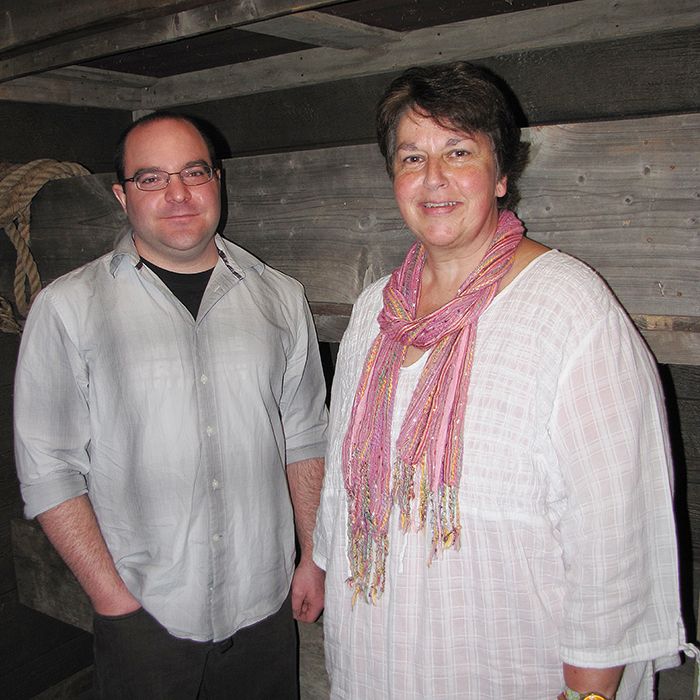
The Buxton National Historic Site and Museum now has a revamped exhibit room that tells the story of slavery to freedom in a new way.
With the help of a grant from the Ontario Ministry of Training Colleges and Universities, the museum recently completed a six-month project that has resulted in several new features.
“Our goal is hoping to enhance that visitor’s experience,” said Shannon Prince, curator of the museum, at an unveiling of the exhibit on Saturday.
To help explain the story of slavery, the museum added a wall that represents the Gate of No Return.
LEADWAVE Technologies from Chatham Voice on Vimeo.
The walk-through exhibit is designed to give people a feeling of what it was like for Africans who had to walk through a narrow gate just before boarding slave ships.
“The gate doors would close behind them and you would hear this creaking and clanging of the chains locking behind you,” said Prince. “So you would have to walk forward. Hence, there is no way of getting out, and you would have to keep walking towards those slave ships.”
Another re-designed exhibit is the life-size-three-berth slave ship feature that gives visitors a sense of the confinement and the brutal conditions.
From there, visitors continue the journey to the auction block, followed by a re-created print shop area which highlights the role the abolition press played in ending slavery.
Joyce Middleton of Buxton, a former chairwoman of the museum, was impressed with the re-design.
She thinks the Gate of No Return, along with some of the other features, will give the curators a better opportunity to tell the story.
“When I came to this gate, it made me emotional and I got that feeling, a little bit of what they might have gone through,” said Middleton.
The exhibit also includes a number of information panels that help tell the story of the original Elgin Settlement founded by Rev. William King and the Elgin Association as a community for fugitive slaves and free blacks.
The community existed between 1849 and 1873, and at its peak almost 1,200 people lived in what was billed as the most successful of all the planned settlements for fugitive slaves.
Local families who are descendants of the original settlers provided the antique boards used in some of the new features, and wood from the community’s Baptist Church was used for the printer’s desk, which has been effectively built around a Smart TV.
The panels also feature QR codes, which can be scanned with phones or iPads so students or visitors can access more information about a particular display.
The new exhibit was designed by Chris Davidson, who also painted a mural for the project, and Karen Robinet, who created the panels and several eBooks which are now included on the museum’s website at www.buxtonmuseum.com.
Shaun Robbins and Andrae-Cutler Robbins built the new features.
As the site prepares to extend its hours, Prince is looking forward to building on last year’s attendance of 8,000.
“Our Canadian visitors have increased, which to me is wonderful because now Canadians are really appreciating their history and want to know what’s in their backyard,” she said.
Events such as the War of 1812 re-enactments, and films such as 12 Years a Slave and The Butler are sparking an interest in history and the Underground Railroad.
“We really are so fortunate to have so much here,” said Prince, referring to Chatham-Kent being steeped in black history, as well as the War of 1812.
The Buxton National Historic Site and Museum is open Monday to Friday.
In May, the doors are open from Wednesday to Saturday.
The site is open seven-days-a-week in July and August.






